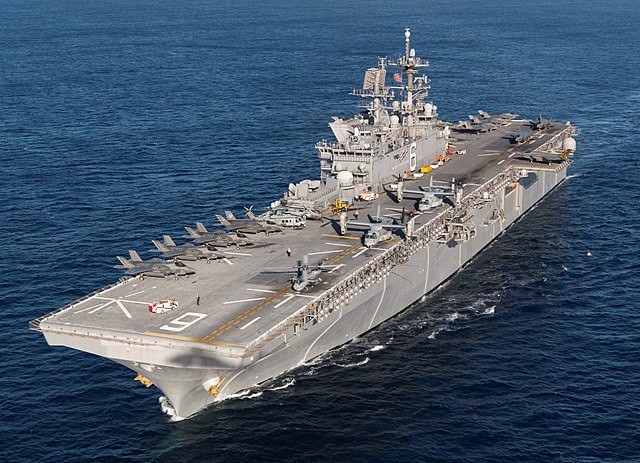
The U.S. Navy ship is one the largest in the world with most aircraft carriers and many surface combatants. Planners want a 500-ship Navy unlike the current fleet now.
According to the Future Navy Force study, there will be a shift from more aircraft carriers and larger surface vessels. Fleets will do away with the carrier strike group-centric mode to faster and lighter force. With this structure, there will be small surface combatants, robotic ships, submarines, and with an improved logistics force, reported Defense News.
The Secretary of Defense Mark Esper tasked two groups to plan the future structure of the U.S. Navy. Some numbers suggested is 480 to 534 ships, which exceeds the 355 manned-ships in 2030, cite Real Clear Defense.
Future fleet will have lighter carriers but more logistics
According to the naval fleet structure suggested by CAPE, and Hudson teams that specify more diversity of ships, increasing the platforms for boosting vertical launch system capacity is necessary. Another is lowering costs to operate and maintain the fleets with the least number of personnel.
With the April Drafts suggestion that is echoed by the CAPE and Hudson Institute teams, they have nine supercarriers instead of the eleven planned for. Keeping about eight carriers in active duty in the Navy, but one in midlife overhaul and refueling. An addition of four light carriers as part of the force on board will be the F-35 as its main aircraft.
Included in the planned ships according to CAPE are 80 and 90 large surface combatants. Comparable to the present 89 cruisers and destroyers, Hudson Institute is more in favor of lightly manned corvettes, instead of large fighting ships.
Sources say that reports mention the need for 65 and 87 large unmanned surface vessels. They will replace the venerable Arleigh Burke-class destroyers and the four guided-missile submarines, but the loss of vertical launch systems must be fixed sooner or later.
An increase of smaller surface vessels is part of the higher number. CAPE thinks it is better at 70 ships, but Hudson consider 56 at most, though another assessment sticks to 52 small surface warships.
One change is the addition of more attack submarines that will exceed the 66-ships in this naval category. Instead of manned subs, it will be unmanned, from 40 to 60 of them in the force. One purpose is to avoid the hazard to human life on highly dangerous missions and reconnaissance. Those crewed by sailors will do something else.
For amphibious landing ships, it will be from the 23 of today to 15 or 19 landing ships. CAPE says it should be 10 big-deck amphibious ships, though Hudson is for 5 and putting savings for four light carriers.
Other suggestions are that Marine light amphibious warships should be from 20 to 26, to move the corps and their gear in island hopping in the Indo-Pacific.
Not to be neglected are the logistics and support force that will number 19 to 30 of them in all, future small logistics ships. Also, ships called oilers, adding 21 to 30 from 17 only.
Both Marines and Navy remarked that rethinking logistics and a distributed fight in the Pacific Ocean.
This is what a 500- ship navy will look like, and is different from what the U.S. Navy is have now.
© 2025 HNGN, All rights reserved. Do not reproduce without permission.








